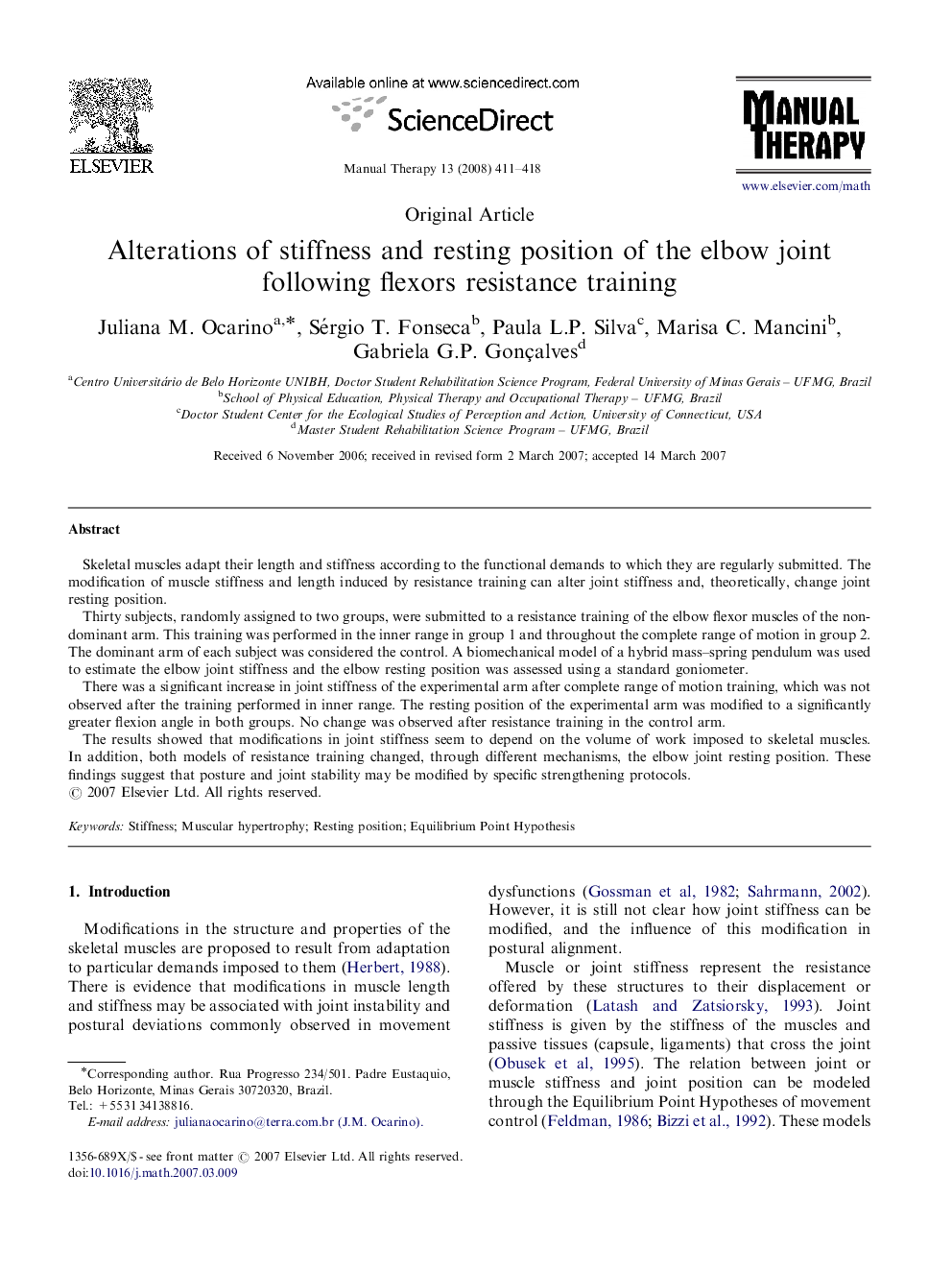| Article ID | Journal | Published Year | Pages | File Type |
|---|---|---|---|---|
| 2625691 | Manual Therapy | 2008 | 8 Pages |
Skeletal muscles adapt their length and stiffness according to the functional demands to which they are regularly submitted. The modification of muscle stiffness and length induced by resistance training can alter joint stiffness and, theoretically, change joint resting position.Thirty subjects, randomly assigned to two groups, were submitted to a resistance training of the elbow flexor muscles of the non-dominant arm. This training was performed in the inner range in group 1 and throughout the complete range of motion in group 2. The dominant arm of each subject was considered the control. A biomechanical model of a hybrid mass–spring pendulum was used to estimate the elbow joint stiffness and the elbow resting position was assessed using a standard goniometer.There was a significant increase in joint stiffness of the experimental arm after complete range of motion training, which was not observed after the training performed in inner range. The resting position of the experimental arm was modified to a significantly greater flexion angle in both groups. No change was observed after resistance training in the control arm.The results showed that modifications in joint stiffness seem to depend on the volume of work imposed to skeletal muscles. In addition, both models of resistance training changed, through different mechanisms, the elbow joint resting position. These findings suggest that posture and joint stability may be modified by specific strengthening protocols.
